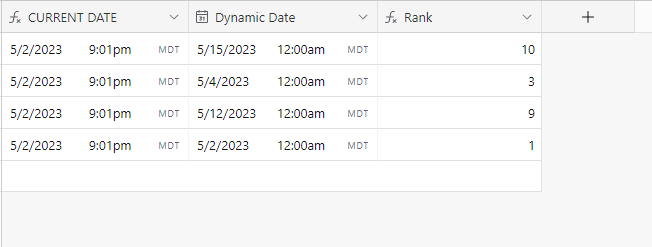@Jesper_Holmstro , I'm not certain if I follow completely. In your original post it appears to me that the formula is always forward looking since you refer to looking 10 days ahead. In your followup you state that it is possible for yesterday to be 10 which means that the formula needs to look forward and back to a certain degree.
If the goal is to just eliminate the weekends I would think that a formula like this could solve those issues:
WORKDAY_DIFF(NOW(), {Dynamic Date})
I personally have hit a few walls using NOW() within formulas generally a result of some timezone or other issue. My prefered workaround is to create a formula field with NOW() in it as a Current Date so that I can more easily adjust time zone problems. In this case I get a table that looks something like this:
The formula for rank then ends up being:
WORKDAY_DIFF({CURRENT DATE}, {Dynamic Date})
Not certain if this helps, but thought it might get you closer to what you are looking for.


